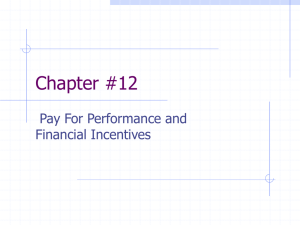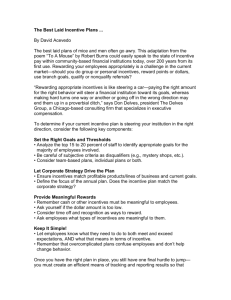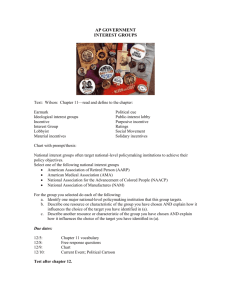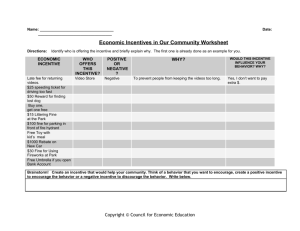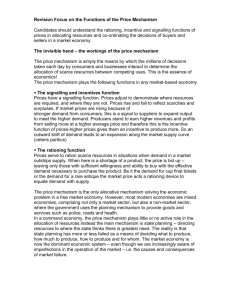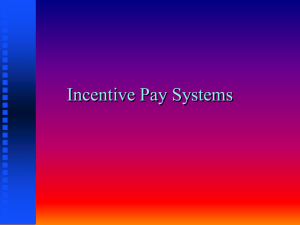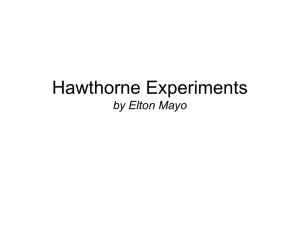Compensation_05
advertisement
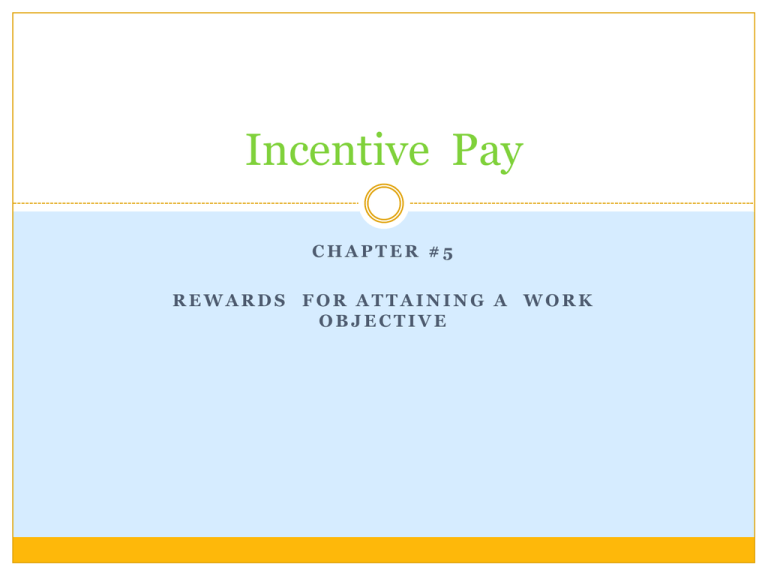
Incentive Pay CHAPTER #5 REWARDS FOR ATTAINING A WORK OBJECTIVE Three Major Assumptions 1. Differences in contributions by individuals or teams. 2. Firms overall performance depends on performance of individuals or work teams. 3. To attract, retain and motivate high performance. Contrasting Incentive Pay with Traditional Pay Traditional Pay Incentive Pay Fixed hourly rate Pay based on Fixed salary performance Individual plans Group plans Companywide plans Individual Incentives PIECEWORK…TWO Production 2. individual performance plus subjective criteria 1. 2. TYPES Two economic advantages More incentive plans Management incentives For reaching firm’s goals look www. aflcio.com Behavioral encouragement For attendance record or safety Referral plans Recruitment of new clients or ees Group Incentives #110 Reward for collective performance Team based Gain sharing Work teams Project teams Task forces Scanlon plans Rucker value added plan Value added formula Improshare Labor hour formula and buy-back provision #116 Companywide Incnetives Profit sharing plans Use of funding formulas and then plan for distribution Equal payments Proportional payments based on contribution Employee stock options Equity segment of ownership Company stock Stock option ESOP’s Designing Incnetive Pay Programs Five key factors 1. Should it be based on group or individual incentives? 2. Should incentive pay replace base salary? 3. Level of risk ees are willing to accept? 4. How shall performance be judged? 5. Time horizon for goals ? Linking incentive pay with strategy Lowest cost strategy? Differentiation strategy? Exercise for class application Google firms with both types of strategies low cost and differentiation and low cost What type of incentive plans do they offer their employees? What are the advantages and disadvantages of both programs????


